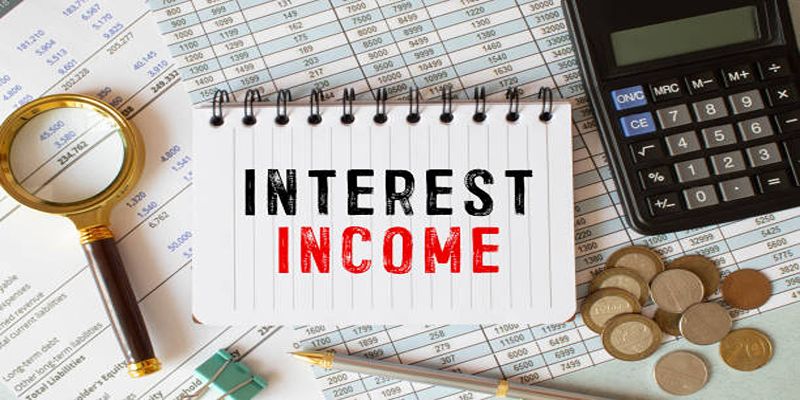Using covered calls stands as a prevailing financial approach which allows investors to gain supplemental earnings from their current stock holdings. The selling of call options attached to your shares through this method grants buyers the ability to purchase them at an established price. The investment method of covered calls allows investors to maintain long-term asset security and generates reliable profits especially during stable market conditions.
What are Covered Calls?

Covered calls are a type of options contract where an investor sells call options on stocks they already own. This means that the investor is giving someone else the right to buy their shares at a set price within a specific time frame. The seller (or writer) of the covered call receives a premium for selling these options, which can be considered extra income in addition to any dividends or capital gains from the underlying stock.
How do They Work?
To understand how covered calls work, let's look at an example. Imagine you own 100 shares of Company X, which is currently trading at $50 per share. You are happy with the stock's performance and do not plan on selling it in the near future.
However, you also notice that there is a high demand for call options on Company X, with many investors looking to buy them at a premium price. Seeing this as an opportunity to make some extra income, you decide to sell one covered call contract on your 100 shares of Company X.
The terms of the covered call contract are as follows:
- Strike Price: $55
- Expiration Date: 1 month from now
By selling this covered call, you give the buyer (or holder) of the option the right to purchase your 100 shares of Company X at $55 per share on or before the expiration date. In return, you receive a premium of $2 per share, or a total of $200.
If the price of Company X does not reach $55 by the expiration date, the option will expire worthless and you get to keep your shares plus the premium from selling the call option. However, if the price of Company X rises above $55, then you may be obligated to sell your shares at that price.
This is where being a covered call writer comes into play. By owning 100 shares of Company X, you are "covered" in case the option holder decides to exercise their right to purchase your shares at the agreed upon price of $55. This reduces your risk as a seller, as you already own the underlying asset and are not exposed to potential losses if the stock price continues to rise.
Advantages of Covered Calls
Covered calls offer several advantages for investors, including:
- Income Generation: As a covered call writer, you can generate additional income from your existing stock holdings by selling call options. This can be particularly beneficial in a market with low or stagnant stock prices, as the premiums received from selling covered calls can provide a steady stream of income.
- Downside Protection: By owning the underlying asset (in this case, 100 shares of Company X), you are protected against potential losses if the stock price were to decrease. This provides a level of downside protection that is not available to naked call writers.
- Flexibility: Covered calls offer flexibility for investors. Depending on their investment goals, they can choose to sell calls at different strike prices and expiration dates. This allows them to customize their strategy based on their risk tolerance and market outlook.
Risks of Covered Calls
Covered calls also come with their own set of risks that investors should be aware of before implementing this strategy. These risks include:
- Limited Profit Potential: While covered calls offer an opportunity for profit, the potential gains are limited to the premium received from selling the call option. If the stock price increases significantly and surpasses the strike price, the investor will miss out on any additional profits beyond the strike price.
- Unlimited Loss Potential: The biggest risk of a covered call strategy is if the stock price declines drastically. In this scenario, the investor would still hold onto 100 shares at a lower value and would not have enough profit from selling the call option to offset their losses.
When to Use Covered Calls
Some situations where covered calls may be beneficial include:
- Generating Income: If an investor has a moderately bullish outlook on a stock, they could use covered calls to generate additional income from selling call options.
- Protecting Against Downside Risk: By selling call options, the investor is essentially setting a "price floor" for their stock. If the stock price were to decline, the premium received from selling the call option would help offset some of the losses.
- Managing Volatility: Covered calls can also be used as a way to manage volatility. By selling call options, the investor can potentially reduce their overall portfolio volatility and limit potential losses.
- Potential for Higher Returns: Covered calls have the potential to generate higher returns compared to simply holding a stock long-term. If the stock price remains relatively stable or increases, the investor will still receive income from selling call options in addition to any gains from the stock itself.
Tips for Success in Covered Calls

Now that we have a better understanding of the benefits and risks associated with covered calls, here are some tips to help you succeed in this strategy:
- Choose Stocks Wisely: It's important to choose stocks that you believe will increase in value or remain stable over time. This can be achieved by conducting thorough research and analysis on the company's financials, industry trends, and overall market conditions. Avoid high-risk stocks or companies with uncertain futures.
- Diversify Your Portfolio: As with any investment strategy, diversification is key. Don't put all your eggs in one basket by only selling covered calls for one stock. Instead, consider spreading out your investments across multiple stocks to reduce risk and increase potential returns.
- Tax Implications: Keep in mind that selling covered calls can have tax implications. You may be subject to short-term or long-term capital gains taxes on profits made from selling covered calls. It's important to consult with a tax professional to understand the potential implications for your specific situation.
Conclusion
Selling covered calls can be a prudent strategy for generating additional income and managing risk within your investment portfolio. However, it is crucial to approach this strategy with a clear understanding of the risks, tax implications, and the potential limitations it may pose. Diversifying your investments and seeking professional advice can help you maximize the benefits while mitigating potential downsides.












